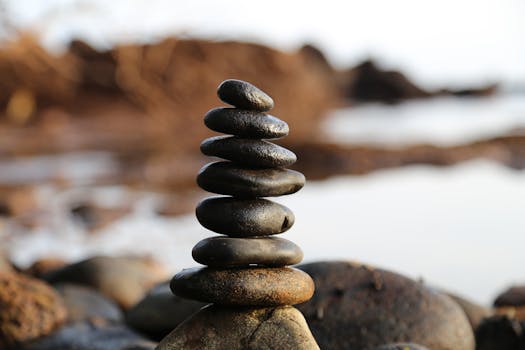
Mindfulness Practices to Enhance Daily Living
Introduction to Mindfulness

Mindfulness is the practice of being present in the moment, paying attention to your thoughts, feelings, and sensations without judgment. It has been shown to have numerous benefits for both physical and mental health, including reducing stress, improving sleep, and increasing focus and productivity.
Mindfulness practices, such as meditation and yoga, have been used for thousands of years to promote relaxation, reduce anxiety and depression, and improve overall well-being. In this article, we will explore the different types of mindfulness practices and how they can be incorporated into your daily life to enhance your overall well-being.
Types of Mindfulness Practices

There are many different types of mindfulness practices, including:
- Meditation: This involves focusing your attention on a single point, such as the breath, a mantra, or a physical sensation, to quiet the mind and achieve a state of relaxation.
- Yoga: This combines physical postures, breathing techniques, and meditation to promote relaxation, flexibility, and balance.
- Body scan: This involves lying down or sitting comfortably and bringing your attention to different parts of the body, starting at the toes and working your way up to the head, to release tension and promote relaxation.
- Mindful walking: This involves paying attention to your breath, posture, and the sensation of your feet touching the ground as you walk, to cultivate a sense of presence and awareness.
- Mindful eating: This involves paying attention to the taste, texture, and smell of the food you are eating, as well as the sensation of eating, to cultivate a healthier relationship with food and reduce stress.
Incorporating Mindfulness into Daily Life

Incorporating mindfulness practices into your daily life can be simple and easy. Here are some tips to get you started:
- Start small: Begin with short periods of mindfulness practice, such as 5-10 minutes a day, and gradually increase as you become more comfortable with the practice.
- Make it a habit: Incorporate mindfulness into your daily routine, such as right after waking up or before bed, to make it a consistent part of your daily life.
- Find a quiet space: Identify a quiet, comfortable space where you can practice mindfulness without distractions or interruptions.
- Be patient: Remember that mindfulness is a practice, and it may take time to develop. Be patient with yourself and don’t get discouraged if your mind wanders.
- Seek guidance: Consider seeking guidance from a mindfulness teacher or therapist to help you get started and provide support and guidance along the way.
Conclusion

In conclusion, mindfulness practices have the power to transform your life and enhance your daily living. By incorporating mindfulness into your daily routine, you can reduce stress, improve your relationships, and increase your overall sense of well-being. Remember to start small, be patient, and seek guidance when needed. With regular practice, you can cultivate a greater sense of awareness, clarity, and peace in your life.






